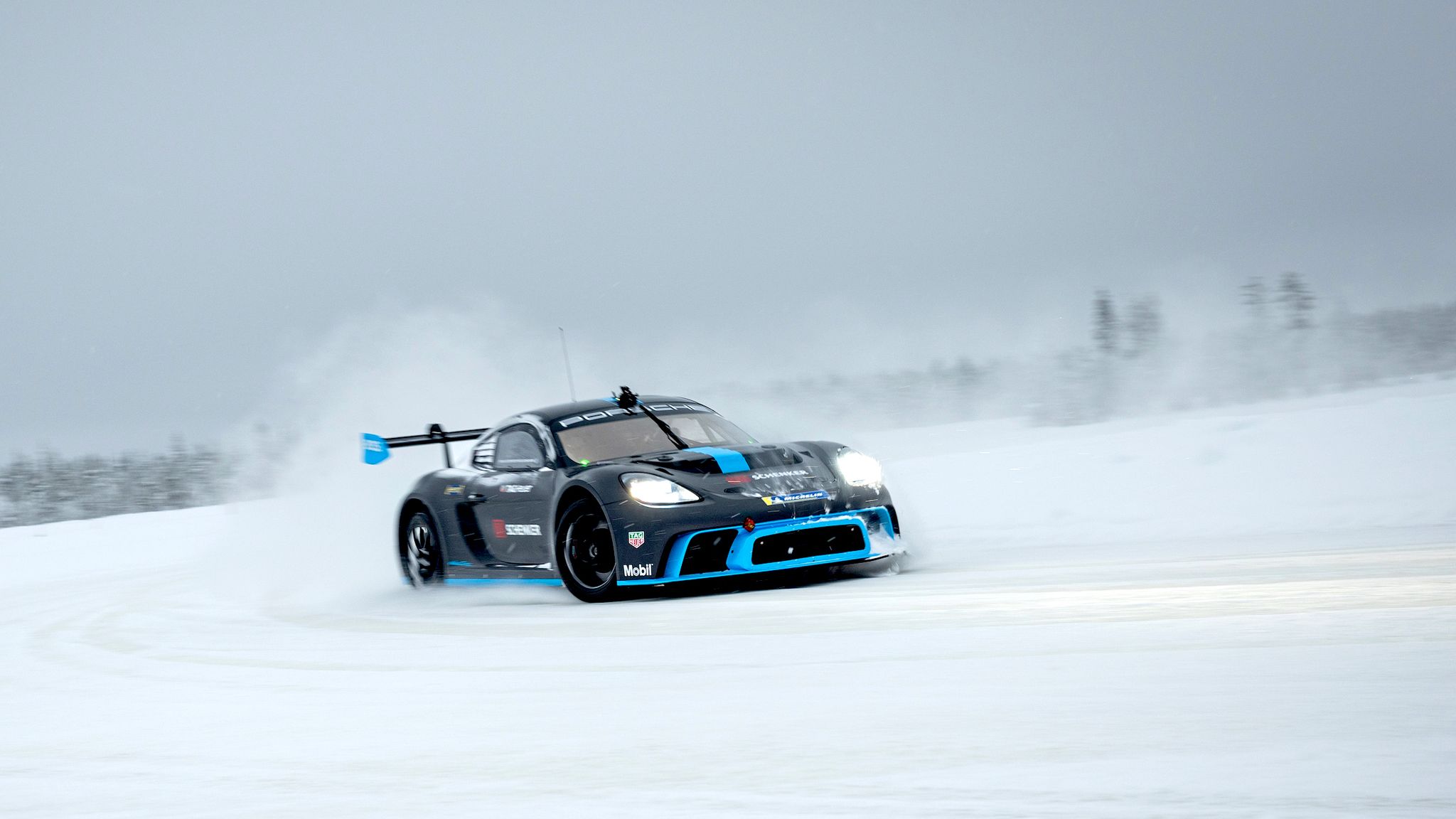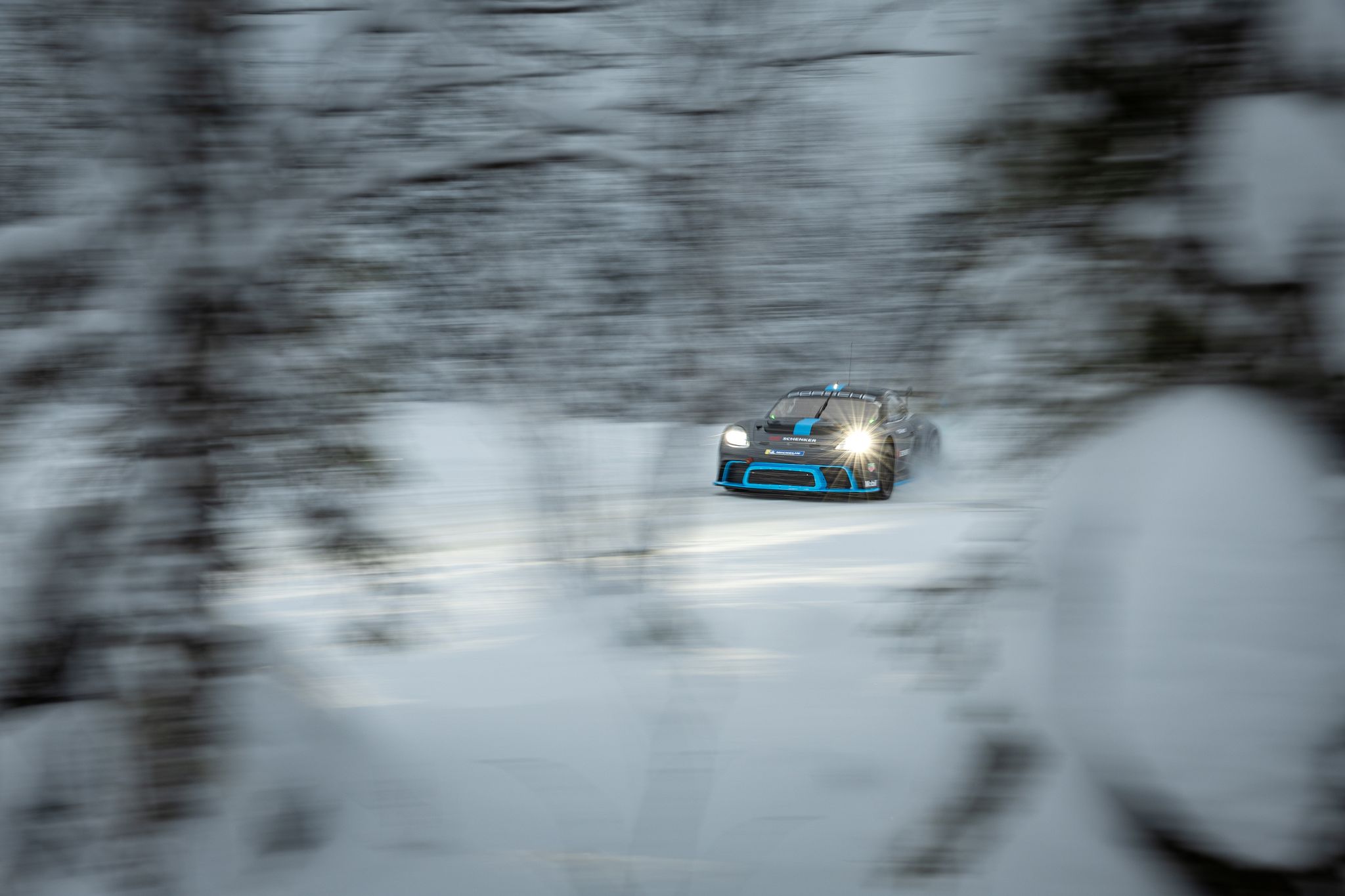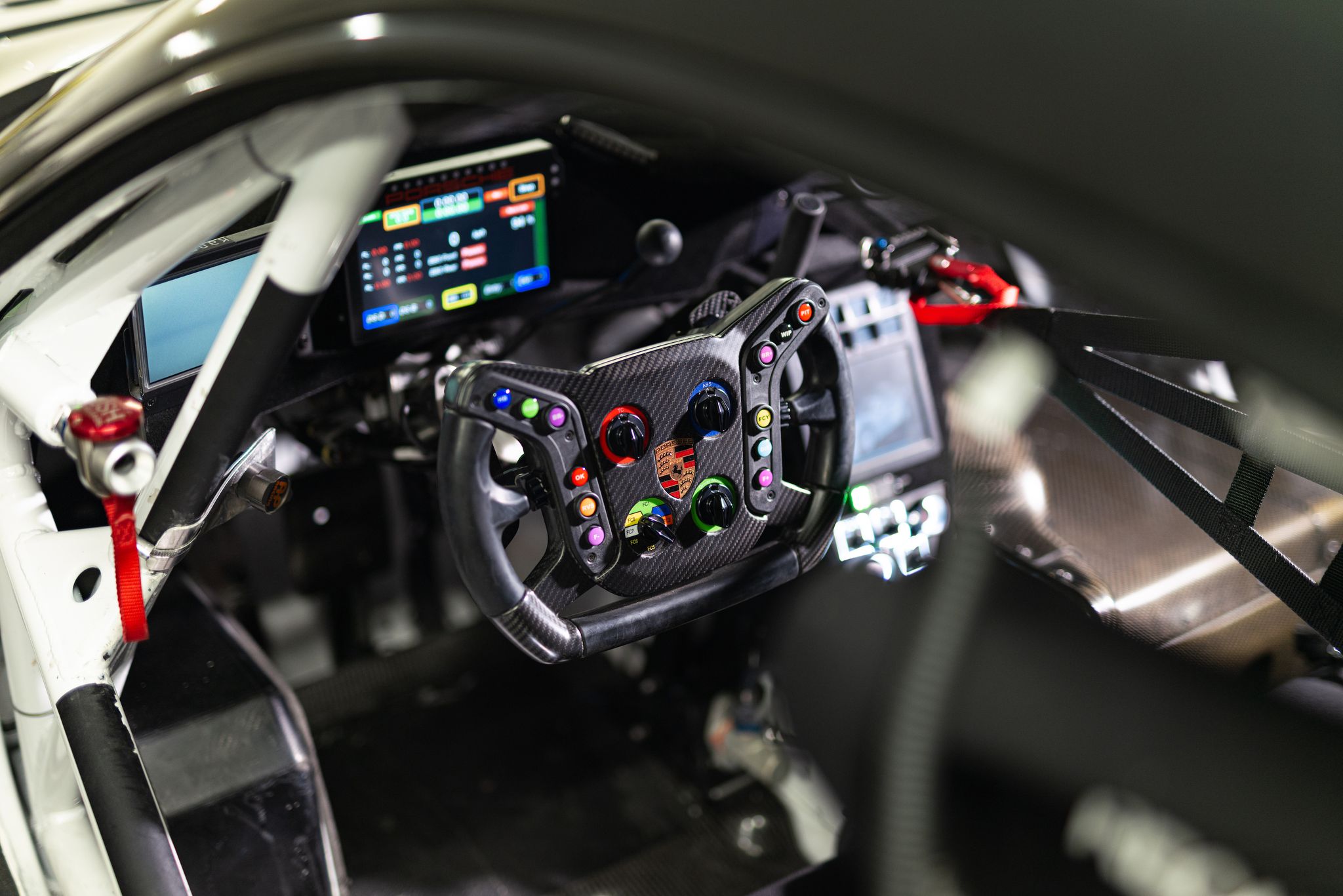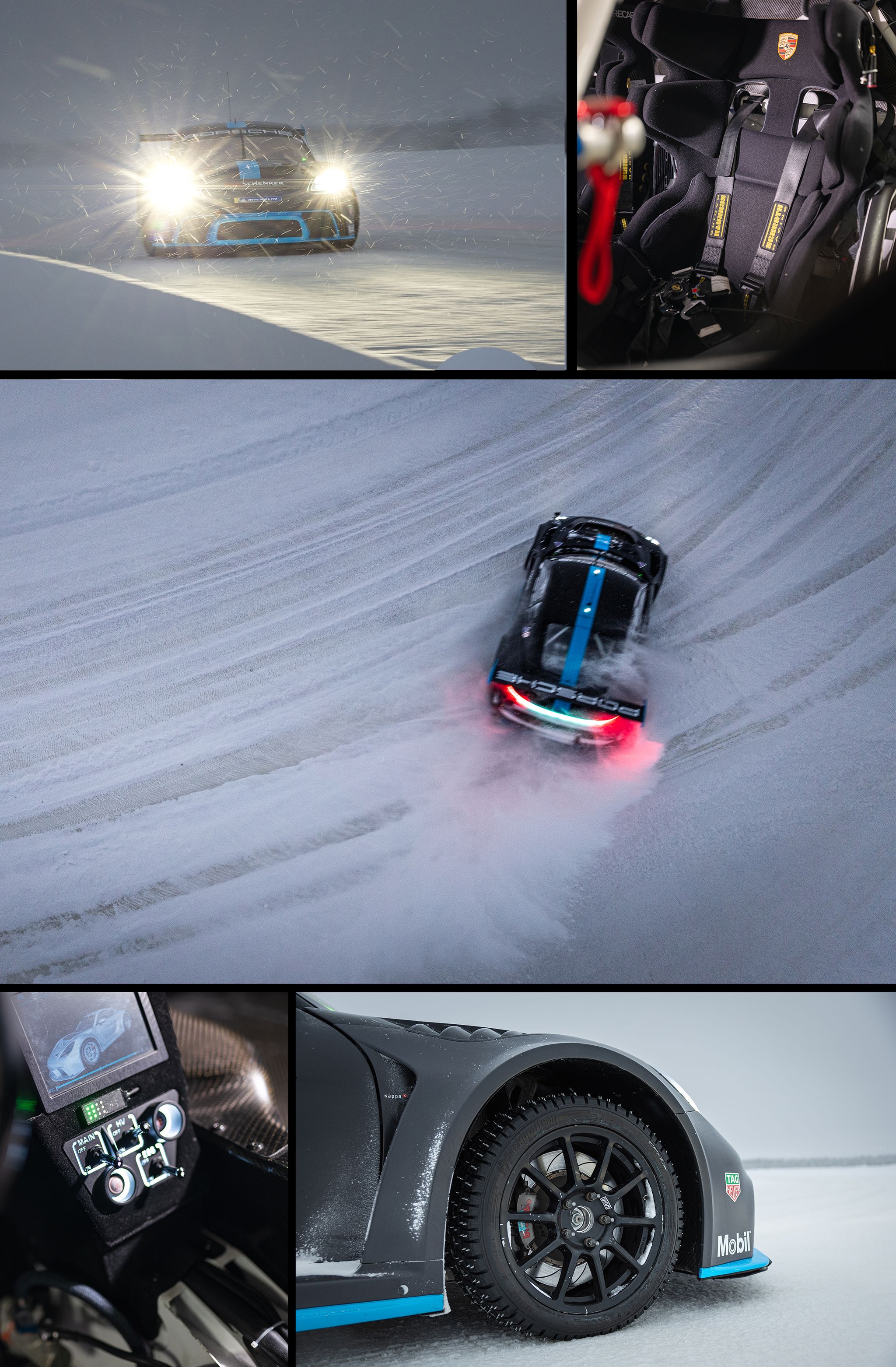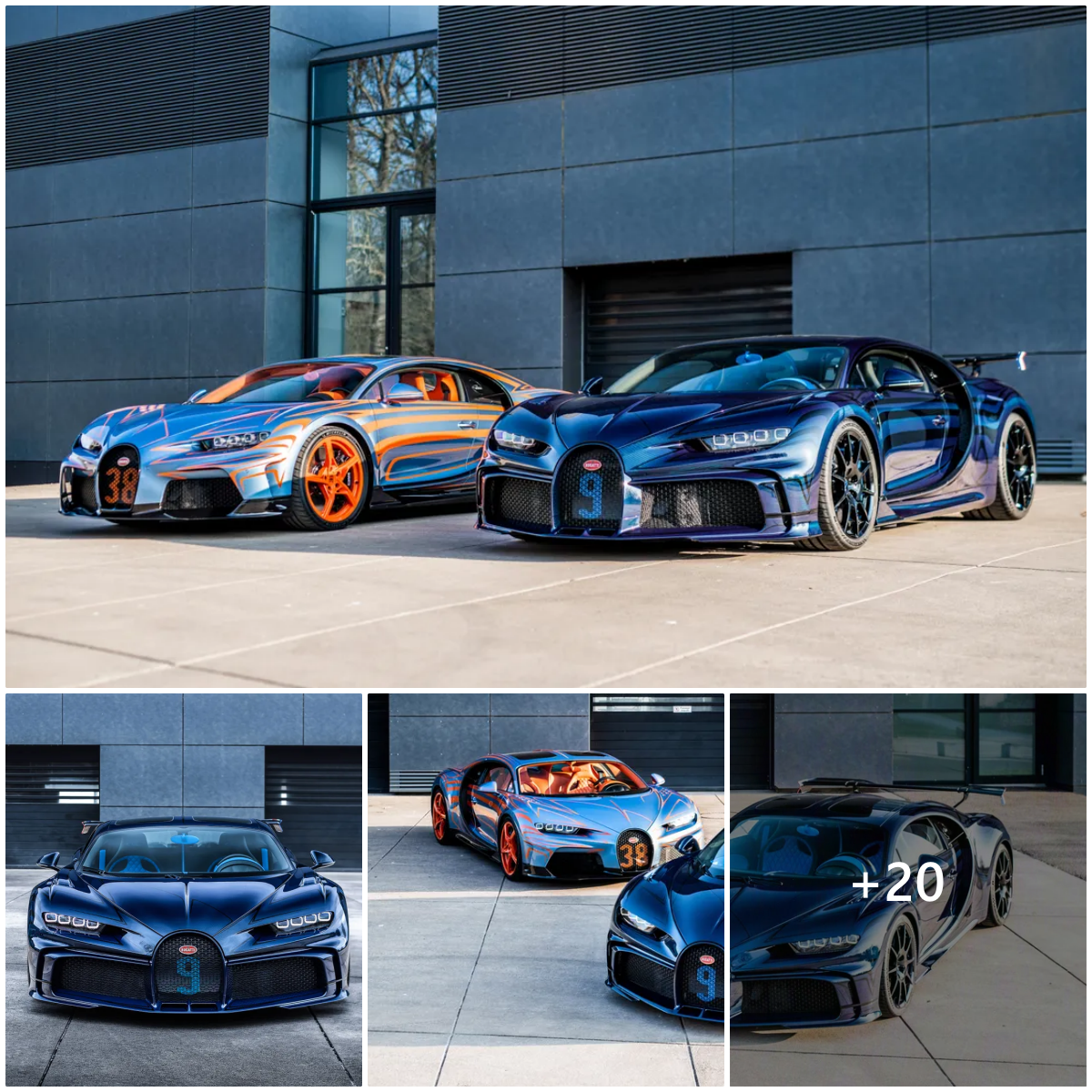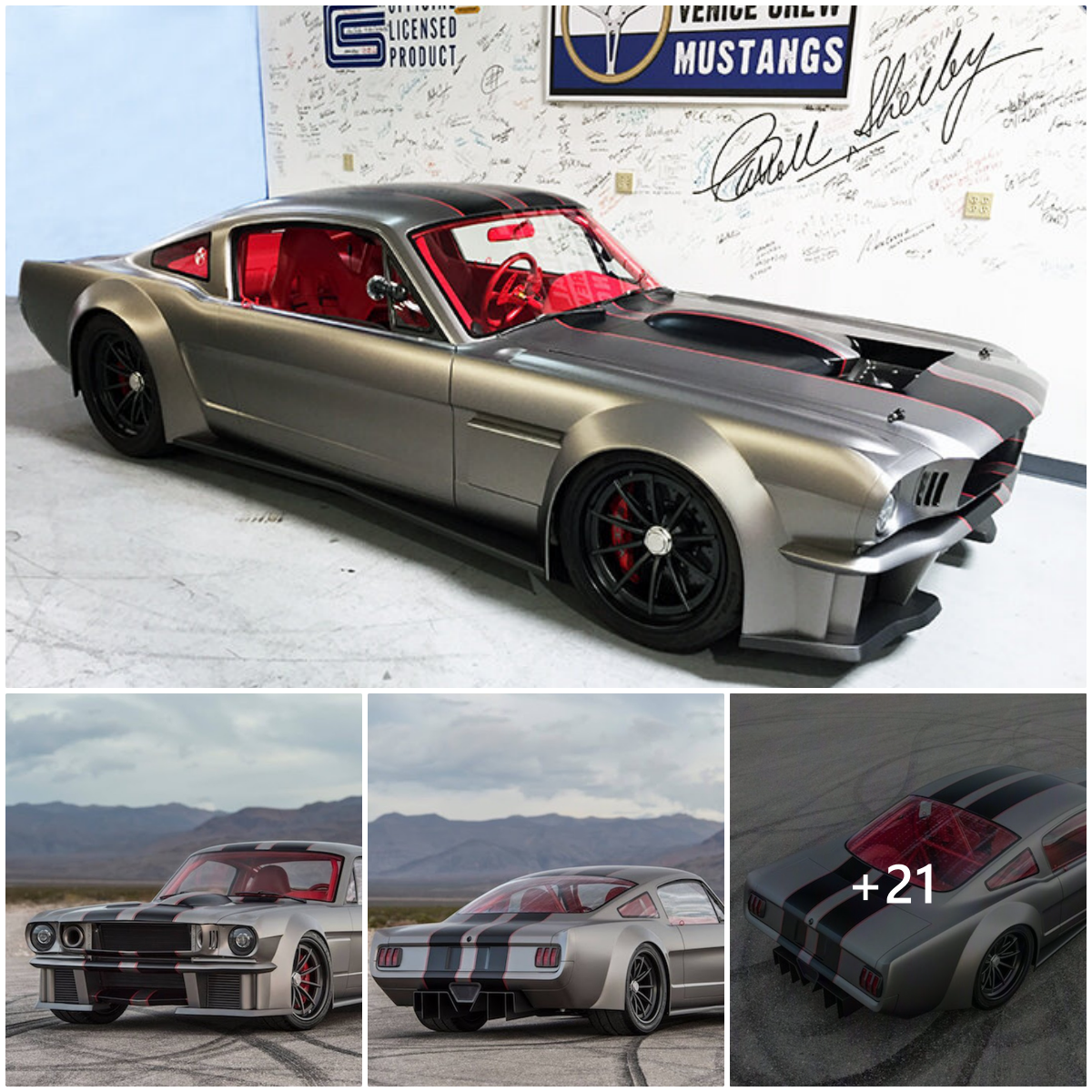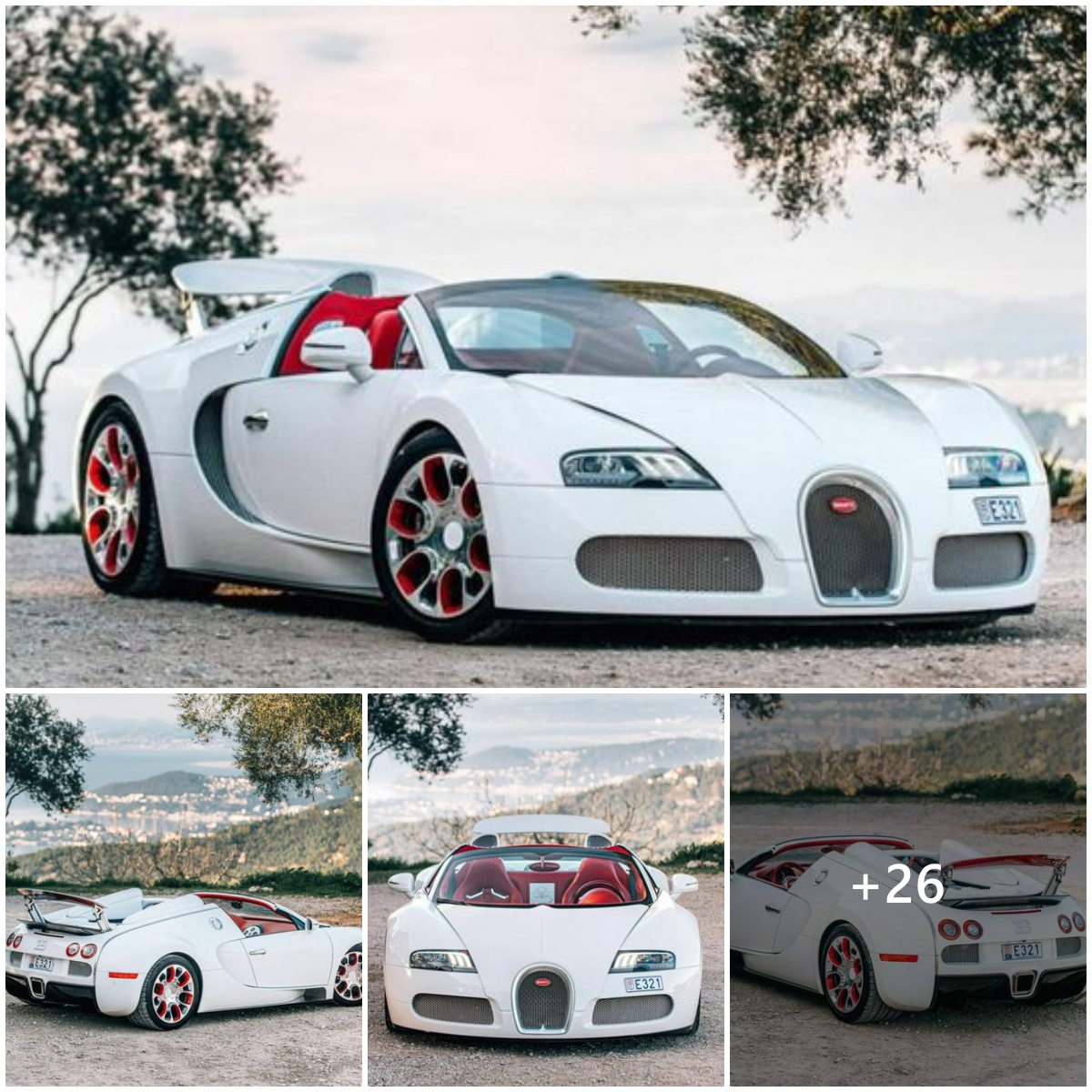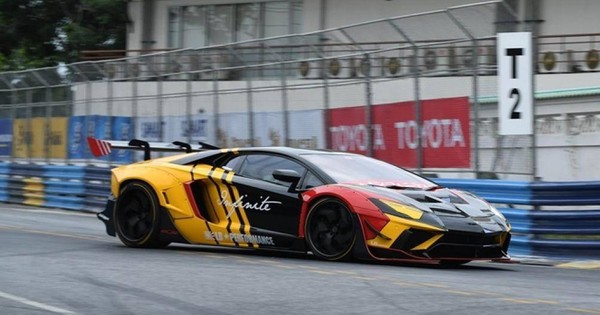Driving Porsche’s all-electric prototype, as fast as a Cup Car with much more potential, we really have no idea what EV performance cars can do.
What would it take to make a hardcore gearhead interested in electric sports cars? Well, like everything else in the hobby, it should probably come down from racing. But in order to sell the rest of us on it, the electric race car can’t just be fast. It has to be engaging to drive.
This past week I travelled all the way to Levi, Finland, 100 miles north of the Arctic Circle. It’s dark, it’s cold, and (delicious, wild-hunted) reindeer meet is served at every meal. It’s also where Porsche’s Ice Experience center is located, and where Porsche thought it could best show off the technology in its GT4 E-Performance electric race car concept: on the ice track.
Enthusiasts, myself included, have yet to be convinced en masse that electric sports or race cars are a good idea, even if they’ve been sold on electrification for daily drivers. I live in Los Angeles, one of the EV capitals of the universe, and while plenty of hardcore enthusiasts commute electric, most of the folks in my social circle go old school analog gasoline to hit the canyons or the track on the weekends. My wife and I love our Mach-E for running errands around town and sitting in the notoriously horrible Los Angeles traffic, but when it’s time to go up the mountains or take a fun drive, the Mach-E remains plugged in at home. To me, and many others like me, there is something about engaging with machinery, with having full control over the machine and working with it, that provides a sensory reward.
Even our recent Performance Electric Vehicle of the Year test didn’t convince anyone on our editorial staff that we should be excited about EV sports cars, despite the fact that all of them are as quick in a straight line as supercars of just a few years ago, and many of them handle brilliantly, too.
The Porsche Taycan Turbo S, the most dynamic EV street car on sale today by far, doesn’t get there.
So what does the path to acceptance look like?
The most obvious answer is weight, meaning a massive reduction of it. Batteries are big and heavy (rocket science, I know), the enemy of weight. Just as an example the gasoline-powered Audi Q5 weighs 5,049 lbs. The electric version? 5,798 lbs – a 749-lb difference. I don’t know of many sports car buyers who are looking for their nimble canyon carvers to pick up an extra eight hundred pounds. Until someone invents a new kind of battery, or the public charging network is ubiquitous and reliable enough that range moves down our priority list, weight will have to wait.
Then there’s engagement, a fair argument that’s slowly being addressed, one new funky feature at a time.
The BMW i4 M50 we featured in PEVOTY doesn’t just have space/Jetsons noises when you smash the go pedal. Toggle “Iconic Sounds” through the touchscreen and be treated to a familiar note: a digitized version of the S54 engine, possibly with a CSL airbox, pumped into the cabin. At first I rolled my eyes, but ended up leaving it on, at least for the dynamic portion of our drive. Dodge has teased similar “reproduction” engine noise on their forthcoming electrified Charger.
Hyundai’s new Ioniq 5 N features a simulated paddle-shifter gearbox, a controversial technology that many reviewers with hands-on experience seem to be enjoying, and some critics seem to be panning from the sidelines. Simulated gears were also added to Ken Block’s “Hoonitron,” an electric modern Audi Sport Quattro concept, between the two Gymkhana videos in which the car was used. For Electrickhana 1, filmed in Las Vegas, Ken had trouble managing wheel speed and control with the direct drive gearbox, vaporizing tires over and over with the instant torque.
So, before the second Electrickhana, filmed in Mexico City, Audi’s engineers added sequential-style gearing to give Ken more control over his wheel speed while sliding. While they were in there, Audi put in a function to have the two motors spin in opposite directions, allowing for the tightest, fastest axis spins ever or a stationary burnout, with the two powertrains having, essentially, a tug of war amongst themselves. Ken wanted control and he got it.
Which brings me back to Finland and the Cayman GT4 E-Performance. One of two functional concept race cars, it looks, more or less, like a finished product. There is no series yet, no real plans to mass produce the cars, and no plan for the logistics of how you’d charge a fleet of cars trackside for a whole weekend of racing. However, Porsche wanted to demonstrate the possibility of not only the performance of an electric GT, which laps any given track as quick as the 992-generation Cup Car, but also the longevity. The GT4 E-Performance can finish a 30-minute race with no degradation in performance.
It features two motors and two battery packs. Together they store a combined 60 kWh of juice and, in qualifying mode, can output up to 1,000 hp to all four wheels. In racing mode, the power is dialed back to around 600 HP. A 30-minute sprint race would require approximately 90 kWh of power, which math tells you is more than the car carries. But thanks to an 800KW onboard charger, the GT4 E-Performance has perhaps the strongest regenerative braking system ever put into a car. During a race, it will recoup enough energy to continue to the finish.
The straight-cut gears are super loud, at least as loud as you’d find in a Cup Car. Even with a motorsport-bred 4.0 liter, the gears in a Cup Car far overpower the sound of the engine. You can imagine how it sounds with no combustion engine at all. And it’s not as hard to modulate the throttle in the EV as one might imagine, even without a tachometer. I’m not sure what “redline” is but I’m sure I never hit it.
On the ice, car control is everything. That’s why Porsche put a school here, and that’s where the adage, “if you want to win, hire a Finn” comes from. So how do you control a 3,500 lb, 1,000-hp Cayman on ice?
Turns out there’s lots of ways to fine-tune the level of control with the GT4 E-Performance. There are a pair of paddle shifters on the Cup-style wheel (meaning two pairs). The top ones control your brake bias in realtime. The car has electromechanical brakes, meaning regeneration first, then the stompers, and, like a traditional brake bias knob, you can move the balance fore and aft. For today’s drive, this has been deactivated, as has all the regenerative potential, in favor of a traditional hydraulic handbrake. No complaints from me.
The other set of paddles controls the power bias, which you can also move fore and aft. With enough clicks, you can deactivate one of the motors entirely, resulting in not only the world’s first AWD Cayman, but also the world’s first potentially FWD Cayman.
Then there’s the reason I’m writing this piece in the first place, 1100 words in: the oversteer pedal.
You see, when driving a traditional AWD car on a loose surface, you typically get the car sideways before the entry, using a Scandinavian flick. You then balance and add power throughout the corner to exit as close to straight as possible. In order to avoid understeer at the mid-corner and exit, you use your left foot to drag the brake slightly, which helps weight up the nose, to tuck you into the corner and maintain your angle.
This technique assumes that the front and rear powertrains are mechanically linked, which traditionally, they are. But in the GT4 E-Performance (and also the Corvette E-Ray and Lamborghini Revuelto), they are not. This opens the door for… other options.
In this car, using the left foot on the brake while accelerating with the right foot deactivates the front motor while overdriving the rear motor, adding instant drift angle without slowing the car the way traditional left-foot braking would. When paired with the handbrake, you now have two ways to add rear angle: one for use while slowing the car and the other for use while powering the car out. This offers an entirely new thing to control on loose surfaces, and is quite frankly, the most interesting dynamic feature I’ve found in a car since Porsche added the “Clutch Kick” controller to the PDK gearbox in the 991.2 GT3 range. I used both very liberally, every chance I got.
The oversteer brake was a brand-new feature, even by the standards of this brand-new race car. Porsche had only developed and installed the feature a week before I got there, meaning I was one of only a handful of people outside the company to even try it. And it worked! Well, mostly. You have to squeeze the brake pedal to get the powertrain to disconnect, not stab at it. The control wasn’t 100 percent accurate.
I didn’t get much seat time in the GT4 E-Performance. We did some slaloms, some scandi-flicks, some figure eights, small, then large donuts. Eventually, I got to take it on a 1-mile ice track but by then it was totally dark and very hard to see. I would have loved a few days of practice with this thing to really take advantage of all it has to offer. Admittedly my seat time was cut into by the fact that I ended up in snowbanks and needed a tow…. Twice. Fortunately the snow banks are soft early in the year and the car doesn’t get damaged, it’s purely inconvenience.
Does the oversteer brake make much difference on a road where you should have full grip at all four tires? No more than the clutch kick feature does. But offering the driver new and different levels of control over the vehicle dynamics, in many ways totally disconnected from the kind of control that we’re used to in gasoline cars, is one very promising way to interest us gear heads in an electrified sportscar world.
But I left Finland more confident about the possibilities for electric sports cars than when I arrived. It’s early–manufacturers will figure out more ways to let us adjust, set up, step out, and slide our sports cars, and eventually, we will get to a roadgoing electric sports car that satisfies all the boxes a gearhead seeks to stay engaged with the driving experience.
